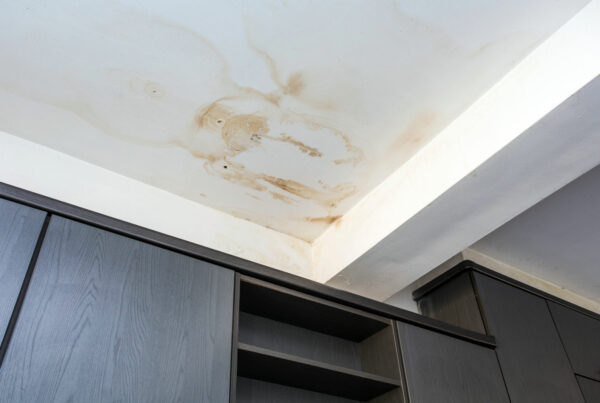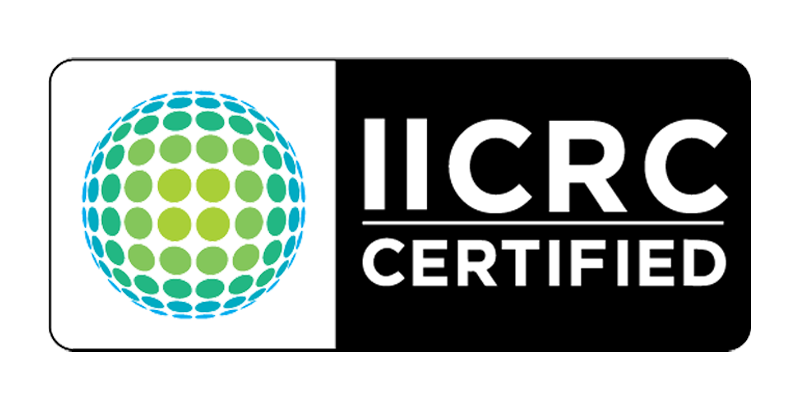Contents
Storm Damage Tree Cleanup In Texas: What You Should Know
If you live in Austin or Central Texas, you probably remember the ice storms that gripped the region last winter. Governor Greg Abbott issued a disaster declaration earlier this year as intense freezes rocked the capital city and its neighboring areas, leaving roads frozen over, infrastructure destroyed, and trees toppled.
Recovering from an ice storm is never an easy undertaking. But downed or damaged trees can make storm recovery a slippery subject, especially given the safety hazards that ice storm tree damage presents. Read on to learn more about ice storms and why calling a professional restoration team for storm damage tree cleanup is essential to a swift, safe recovery.

What Is An Ice Storm?
Ice storms occur when rain passes through a layer of subfreezing air close to the surface of the Earth. The rain freezes and becomes ice upon contact with cold objects like trees, buildings, power lines, and roads. As the storm progresses, ice continues to accumulate, eventually exerting significant pressure on those surfaces. According to the National Weather Service, even small accumulations of ice can cause major disruptions and become extremely hazardous to pedestrians and motorists.
While ice storms are certainly dangerous for humans, they’re particularly perilous for trees, too. Coated with thick layers of ice, trees can buckle and break under all that extra weight. It’s not uncommon for branches, boughs, and sometimes entire trees to come crashing down during an ice storm. High winds during ice storms can also send trees tumbling to the ground. This poses a serious risk to the safety of people and their properties.
If you’ve been hit by an ice storm and are dealing with downed or damaged trees, here’s what you should do.
Evaluating Ice Storm Tree Damage
Before you call in a professional team for storm damage tree cleanup, you can take a few steps to ensure the safety of your property and everyone who resides on it. Here’s how.
- Inspect the trees: Begin by closely examining each tree on your property. Look for visible signs of damage, such as broken branches, split trunks, or leaning trees. Take note of any significant structural issues that may compromise the tree’s stability or health.
- Evaluate the severity of the damage: Once you’ve identified the damage, try to classify the damage as either minor, moderate, or severe. This evaluation will help you prioritize the required actions and determine which trees or branches require immediate attention.
- Consider the safety risks: As you assess the damage, prioritize safety considerations. Look out for any immediate safety hazards, such as hanging limbs at risk of falling or trees leaning precariously near buildings or power lines. These pose potential dangers to people, property, and utility infrastructure.
- Scan the surroundings: Identify whether structures or objects around the damaged tree need attention. If your home or a building was smacked by a downed branch, you may need to temporarily patch any holes to prevent further damage, including water damage from melted ice, from occurring.
Professional Storm Damage Tree Cleanup Services:
What To Expect
If your trees show signs of severe storm damage, tree removal services will need to be arranged. That means you’ll need to call professionals to help you restore your property. Trying to remove downed or damaged trees on your own can put you at serious risk of injury. You could also run the risk of further damaging the tree or the buildings surrounding it. Plus, dealing with damages caused to your home or other property structures is overwhelming — but that’s why you can count on Cavalry to help.
At Cavalry, we help clients in Austin and Central Texas recover from tree damage after severe ice storms. After we ensure all tree debris has been safely removed from the premises, we’ll help you restore and reconstruct the parts of your property that need repair.
Here’s what you can expect from Cavalry’s storm damage restoration services:
- Safety assessment: Our team double and triple checks the area for identifiers of any safety hazards, such as downed power lines, gas leaks, and unstable structures. Only after these have been mitigated and secured will we begin with any restoration work.
- Debris removal: After we’ve made sure the area is safe, we’ll clear away debris from the damaged trees, as well as any debris created from structural damage to nearby buildings or infrastructure.
- Structural repair: We get to work on repairing your building. We’ll focus on fixing any structures damaged by fallen trees, such as walls, roofs, and foundations. However, we can also rebuild entire building components if they’re beyond repair.
- Landscaping and other finishing touches: Once the major repairs are complete, we’ll ensure your lawn and surrounding property look as good as new. Our experts will give you tips for preventing further damage to your trees in future storms.
We also advise to file a homeowner’s insurance claim after incurring tree damage. Be sure to carefully examine your homeowner’s insurance policy to understand what it covers regarding tree damage. Insurance policies typically cover tree damage caused by specific perils, such as storms, lightning, or wind. Check if fallen trees and debris removal are included and up to what limits.
About Cavalry
Since 1989, Cavalry has helped communities across Austin, Houston, San Antonio, and Dallas/Ft. Worth rebuild their properties after storms and other disasters. If you experience tree damage or any other kind of property loss due to natural disasters or accidents, we’re here for you 24/7. Our clients count on us to help restore their homes and businesses after heavy ice storms, and we are always there for them.
If you have questions about tree damage cleanup or other reconstruction services, get in touch.
You can reach us anytime at 888-601-3473.
Ice Storm & Tree Damage FAQs
How can I prevent tree damage during ice storms?
Take tree care practices into account, such as routine pruning, watering, and regular inspections to identify and address potential issues early on. Consider planting new trees in locations that minimize their vulnerability to ice storms, such as areas sheltered from strong winds or away from power lines.
Does homeowners insurance cover storm damage to trees?
It depends on the specific policy, but many insurance policies do include coverage for tree damage. We recommend contacting your insurance provider to discuss the situation and get clarification on your policy coverage.




